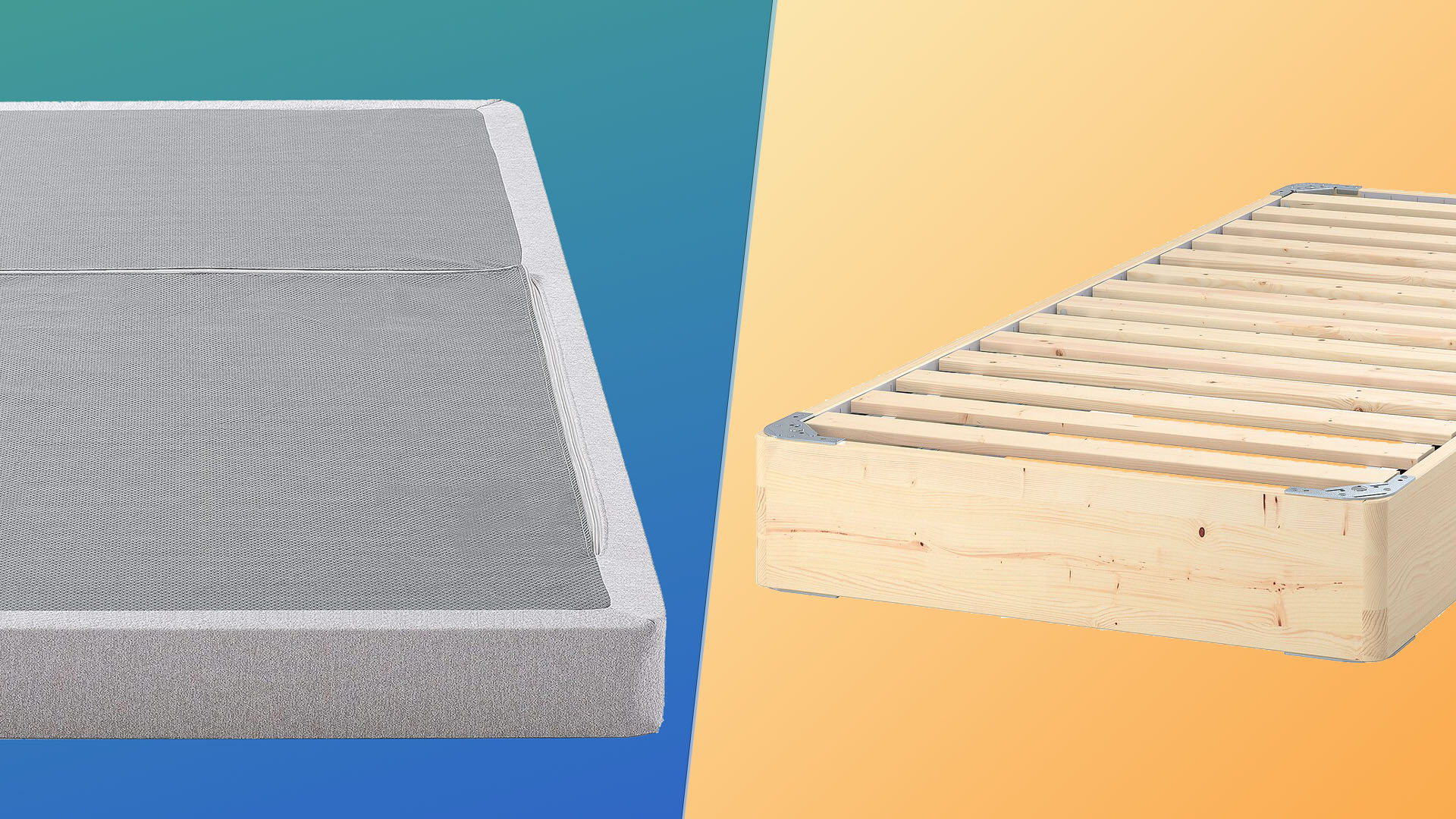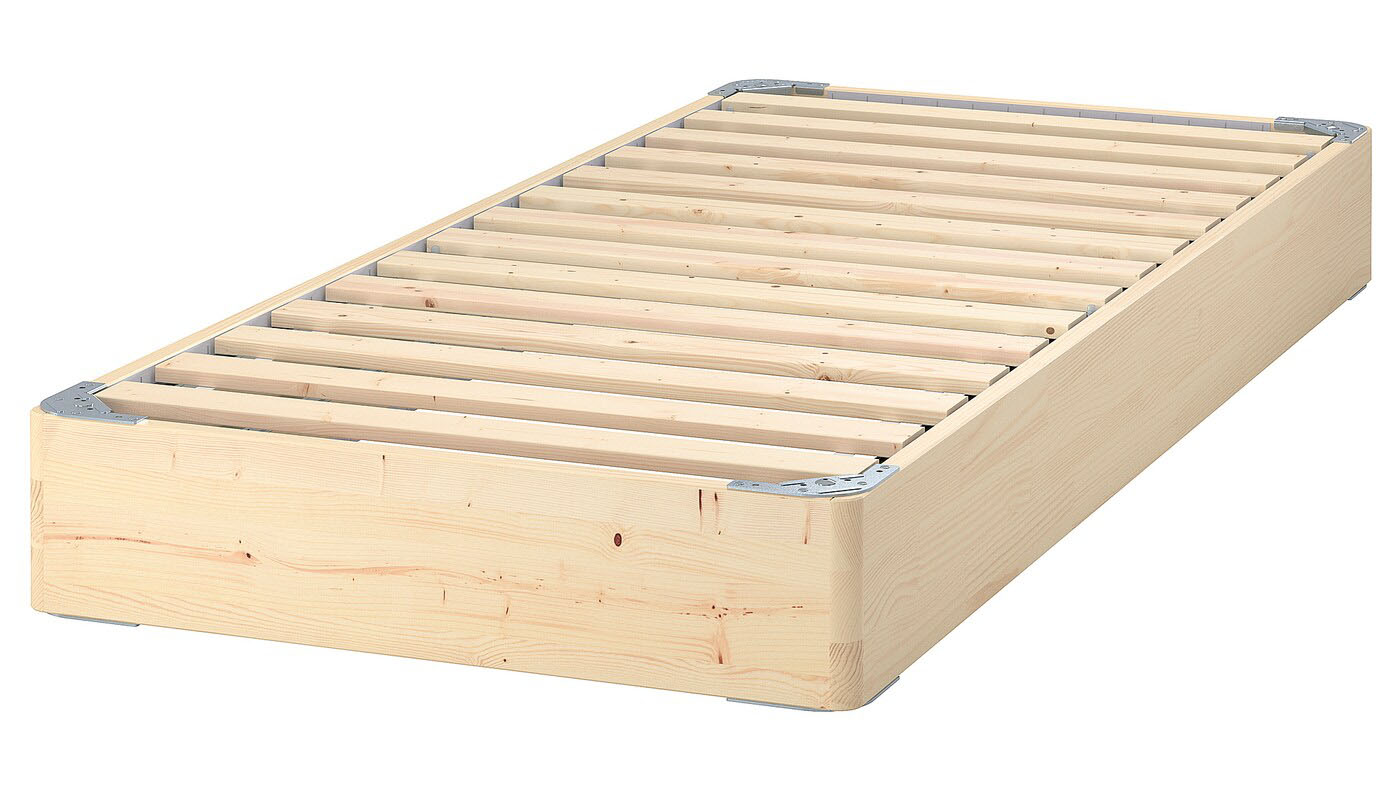Foundation vs box spring: Which do I need for my mattress?
Will a foundation or box spring bed base provide the best support for your mattress?

If you're upgrading your sleep setup, you'll need to decide between a foundation versus box spring. When it comes to your sleeping environment, it's not just your choice of mattress that's important. There are a number of other elements that help you to get a good night's sleep and one of the most important is the bed base or frame. There are a variety of options out there, with traditional box springs and foundations being two of the most common, but which is right for you?
Remember that a new base isn't going to correct problems with an old mattress and vice versa. If you're in the market for a new base, but your mattress is past its best, take a look at our best mattress guide to help you pick a new one.
Foundations and box springs have some key differences between them, so this guide should help you decide which is the right choice for your mattress and sleeping style.
What is a mattress foundation?
Mattress foundations are boxed wooden bases, made with either wooden slats or a wooden board to support your mattress. The slats or board are then covered with a breathable fabric. Modern foundations tend to come with legs so that they can double up as a foundation and bed base. However, if they don't, they can also be used with a bed frame – here's our pick of the best bed bases on the market.

As with all bed bases, foundations have their pluses and minuses. Read on for a look at the main pros and cons of this base type, or head to our guide to What is a mattress foundation? for more general information.
Benefits of foundations:
- Compatible with all mattress types (but double-check brand guidelines)
- Extremely durable
- Provides even support across the mattress
- Provides strong support
Drawbacks of foundations:
- As they're made of wood, they tend to be heavy
- Could make a thinner mattress feel too firm
- Lacking in 'give'
What is a box spring?
Box springs are comprised of a sturdy wooden or metal frame that's filled with a set of wire coils to provide support to your mattress. They are wrapped in fabric so that they match the mattress. Box springs are regarded as a more traditional base, but they do still have their uses. You'll find more detail in our article on 'what are box springs and does your mattress need one?'

Like foundations, box springs have their positives and negatives. Here are the main pros and cons...
Get instant access to breaking news, the hottest reviews, great deals and helpful tips.
Benefits of box springs:
- Promote better airflow
- Provides shock absorption
- Provides support for thinner innerspring mattresses
- Can help to reduce motion transfer
Drawbacks of box springs:
- As box springs age the coils can become noisy
- Not compatible with memory foam, latex or hybrid mattresses
- Coils break down over time, leading to sagging
Foundation vs box spring: Mattress compatibility
Modern foundations are an excellent choice because they work with all types of mattresses – from memory foam, through latex, innerspring and through to hybrids. However, this doesn't mean that you don't need to take a couple of things into consideration. You need to make sure that the foundation is strong enough to cope with the weight of your chosen mattress, as well as the weight or combined weight of those sleeping on it. And do note that most modern mattresses need a foundation with either a solid board base or slats that are no more than 2.75" apart.
As we've previously mentioned, box springs are really only suitable for innerspring mattresses, and often only those that are on the thinner side. If you have a hybrid, memory foam or latex mattress these could be too heavy for a box spring. You should, as with a foundation, check on what your mattress manufacturer says. In some cases a box spring can invalidate your warranty or damage a mattress. But for innerspring mattresses, they can be a good choice.
Foundation vs box spring: How to choose
In most cases, a foundation will be the better choice. They suit most mattresses and will give additional support to your mattress and can also add a firmer feel to your overall sleeping experience. A foundation with slats will help to promote airflow and, as they're covered with breathable materials, they're a good choice for those who sleep hot. And, because they keep a mattress stable, they can also help to reduce motion transfer.
However, as foundations make mattresses firmer, those looking for a soft bed to sink into may find them too firm for their requirements. Foundations don't have much give or flex to them. It's also worth noting that foundations are heavy, so aren't a great choice if you're looking to move your bed on a regular basis.
Box springs are also good at promoting airflow and reducing motion transfer, plus they're more flexible than a foundation. However, they are really only suited to innerspring mattresses – making them a more niche choice.

Jo Plumridge is an experienced mattress reviewer with several years' experience covering all things mattresses and sleep, and who tests memory foam, hybrid and organic mattresses. What Jo doesn't know about a boxed mattress isn't worth knowing, so naturally we tasked her with producing a series of features for Tom's Guide looking at all aspects of mattresses, from how to pick between latex and memory foam (it's a tricky one), to the seven mistakes people make when buying a mattress for the first time. When testing the DreamCloud Luxury Hybrid for Tom's Guide, Jo said: "I loved the back support and pressure relief it offered. Plus, it looks far more expensive than it is." When she isn’t writing about sleep, Jo also writes extensively on interior design, home products and photography.
